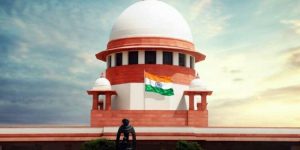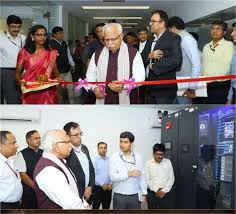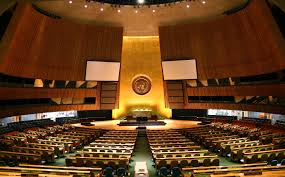Today’s Current Affairs: 26th September 2024 for UPSC IAS exams, State PSC exams, SSC CGL, State SSC, RRB, Railways, Banking Exam & IBPS, etc
Table of Contents
Commission for Air Quality Management:

The Supreme Court recently sought a report from the Commission for Air Quality Management (CAQM) on incidents of stubble-burning and action taken against these occurrences.
- The CAQM is a statutory body established under the Commission for Air Quality Management in National Capital Region (NCR) and Adjoining Areas, Act 2021.
- It undertakes action for the prevention and control of Air pollution in Delhi-NCR & Adjoining Areas which impacts the air quality of the National Capital Territory (NCT) of Delhi.
- The Commission is required to coordinate its actions on monitoring of air quality with the government of Delhi and the adjoining states, which includes Punjab, Haryana, Rajasthan, and Uttar Pradesh.
- Powers are Restricting activities influencing air quality.
- Investigating and conducting research related to environmental pollution impacting air quality, preparing codes and guidelines to prevent and control air pollution,
- Issuing directions on matters including inspections, or regulations, which will be binding on the concerned person or authority.
- All the directions and orders by the Commission are of binding nature, and any person, officer, or authority shall be bound to comply with the same.
- The commission is directly accountable to the parliament.
Supreme Audit Institutions:

The President of India recently expressed her confidence in the ability of the Supreme Audit Institutions (SAIs) in ensuring the efficiency and integrity of public funds.
- They are public oversight institutions responsible for the audit of government revenue and expenditure.
- They are a critical link in a country’s accountability chain.
- By scrutinizing public financial management and reporting, they provide assurance that resources are used as prescribed.
- Most SAIs derives their mandate from the constitution and/or legislation.
- SAIs undertakes financial audits of organizations’ accounting procedures and financial statements, and compliance audits reviewing the legality of transactions made by the audited body.
- They also conduct performance auditsto scrutinize the efficiency, effectiveness, or economy of government’s undertakings.
- The independence of the SAI from the executive bodies it audits is fundamental to its role in holding governments to account and building trust between the organs of the state and society.
- The Comptroller and Auditor General of India (CAG) and the Indian Audit and Accounts Department (IAAD) functioning under him constitute the SAI of India.
- Nearly every SAI from a United Nations-member country is a member of the International Organization of Supreme Audit Institutions(INTOSAI).
Ghost Sharks:

Researchers recently identified a new ghost shark species named Australasian Narrow-nosed Spookfish in the Chatham Rise region near New Zealand.
- Ghost sharks, also known as chimaeras and spookfish, are a group of cartilaginous fish closely related to sharks and rays.
- They genetically diverged from their shark relatives nearly 400 million years ago.
- They have long, tapering bodies and incredibly large heads.
- The ghost shark’s maximum observed length is about 49 inches, but scientists believe they can grow to be more than six feet in some cases.
- Their skin ranges in color from black to pale blue to brownish grey.
- They have haunting black eyes and smooth, light brown, scale-free skin.
- Their eyes are backed with a reflective tissue layer that makes them seem to glow in the dark, contributing to an eerie—even ghostlike—appearance.
- They live at depths ranging from 200 meters to 2,600 meters and generally stay close to the seafloor.
- Their diet primarily consists of shellfish, mollusks, and worms that live on or under the seafloor.
- They are sometimes referred to as the ocean’s butterflies for the way they glide through the water with their large pectoral fins.
- Ghost sharks are thought to be solitary animals, as they are generally observed alone.
Doctrine Of Constructive Possession:

Invoking the doctrine of “constructive possession”, Supreme Court recently ruled that watching child pornography over the Internet without downloading would also amount to “possession”, in terms of Section 15 of the POCSO Act, provided the person had a degree of control over such material.
- It is a legal doctrine that attributes possession of an item or substance to an individual, even if they do not have physical control or immediate possession of it.
- In criminal law, constructive possession arises when a person has the intention and ability to exercise control over the item or substance, either individually or jointly with others.
- Unlike actual possession, which involves physical custody or control, constructive possession is based on the concept that an individual can still be held responsible for items they have the power to control, even if those items are not physically on their person.
- The key element is the intent and capability to exercise dominion or control over the object or substance.
Constructive possession allows a person who does not actually have personal possession of something, yet still controls it, to be charged with a crime for possessing it. - Constructive possession often arises in cases involving illegal drugs, firearms, or stolen property, where the defendant may not have direct physical possession but has control or access to the item.
- For a successful prosecution of constructive possession, certain criteria must be met.
- These include:
- Knowledge of the Item’s Presence: The individual must be aware that the item exists. Mere proximity to an item without knowledge does not constitute constructive possession.
- Ability to Exercise Control: The person must have the capability to maintain dominion over the item. This means having the power and intention to control its use.
- Intent to Possess: There must be an intent to possess the item. This can often be inferred from circumstances, such as the location of the item and the individual’s actions or statements.
CSIRT-Power:

The Union Minister for Power inaugurated the Computer Security Incident Response Team for the power sector (CSIRT-Power) in New Delhi.
- CSIRT-Power was launched in collaboration with CERT-In and it is in alignment with the National Cyber Security Policy of 2013.
- It will serve as the central agency for responding to cyber incidents and ensuring coordinated responses.
- The primary objective of CSIRT-Power is to enhance cybersecurity resilience in the Indian power sector through a structured approach.
- This includes preventing and responding to cybersecurity incidents, ensuring coordinated responses to cyber threats, and collecting, analysing, and sharing information about sector-specific threats.
- CSIRT-Power will also implement measures to raise cybersecurity awareness and improve the sector’s cybersecurity posture while promoting best practices, standard operating procedures, and security policies.
- The facility will provide cybersecurity expertise and assistance to constituent utilities and facilitate cooperation among stakeholders to strengthen cybersecurity efforts.
- It is set up under the Central Electricity Authority.
- CERT-In is the national nodal agency for responding to computer security incidents as and when they occur.
Pact For The Future:

The United Nations General Assembly (UNGA) adopted a “Pact for the Future” a comprehensive agreement designed to reshape global governance for the twenty-first century at the Summit of the future.
- Pact for the Future is a landmark declaration reaffirming the commitment of UN Member States to sustainable development, peace, and stronger global governance.
- The Pact’s five broad focus areas include
- Sustainable development: It includes a pledge to move faster towards achieving the UN’s Sustainable Development Goals (SDGs) and the Paris Agreement commitments on climate change.
- International peace and security: Redouble efforts to build and sustain peaceful, inclusive and just societies and address the root causes of conflicts and protect all civilians in armed conflict
- Science and technology and digital revolution: Science, technology and innovation have the potential to accelerate the realization of the aspirations of the United Nations across all three pillars of its work.
- Youth and future generations: Listen to young people and include them in decision-making, at the national and global levels
- Transforming global governance: Build stronger partnerships with civil society, the private sector, local and regional authorities.
MAPCIS Crater:

Australian researchers have uncovered evidence of a massive impact crater which is named as MAPCIS, which could revolutionise our understanding of Earth’s geological history.
- MAPCIS Crater is classified as a nonconcentric complex crater, and could provide invaluable insights into Earth’s geological and biological evolution.
- It spans an astonishing 600 kilometers across central Australia.
- The newly discovered structure, named as Massive Australian Precambrian-Cambrian Impact Structure (MAPCIS).
- The impact is believed to have occurred at the end of the Ediacaran period.
- It includes massive deposits of pseudotachylite breccia (melt rock) near the crater’s center, presence of shocked minerals, including lonsdaleite (shocked diamond), and impact-level concentrations of iridium.
- Ediacaran Period is an interval of geological time ranging 635 to 541 million years ago.
- It is the uppermost division of the Proterozoic Eon of Precambrian time and latest of the three periods of the Neoproterozoic Era.
- This period produced some of the earliest known evidence of the evolution of multicellular animals.
- It was a time of immense geological and biological change, and records the transition from a planet largely dominated by microscopic organisms, to a Cambrian world swarming with animals.
Mankidia Tribe:

The Mankidia community became the 6th particularly vulnerable tribal group (PVTG) PVTG to get habitat rights over forests in Odisha.
- The Mankidia community is an Austro-Asiatic community that ekes out a living mainly from the forests.
- They constitute a semi-nomadic section of the Birhor tribe.
- They have been identified as a Particularly Vulnerable Tribal Group (PVTG) in Odisha.
- They are primarily a food gathering and huntingThey are one of the most little-known forest dwelling and wandering communities of the state as well as the country.
- They wander inside forests in small bands and stay at different tandas — the temporary makeshift settlements comprising of temporary dome-shaped leaf huts known as Kumbhas.
- They speak a form of Munda language and some of them are also conversant in Odia.
- They believe in both malevolent and benevolent spirits and Gods. Logobir and Budhimai are their supreme deities.
- The worship their ancestors for the purpose of enjoying health and achieving success in hunting and collecting forest produce.
- They are mainly found in Odisha, Jharkhand, Madhya Pradesh and West Bengal.
Robotic Multi-Utility Legged Equipment:

The Indian Army has recently inducted 100 robotic Multi-Utility Legged Equipment (MULE) for use in forward (combat) areas, especially in high altitudes.
- These robots can climb stairs, steep hills, and operate in extreme temperatures ranging from -40 to +55 degrees Celsius and carry a payload of 15kg.
- Also, logistics drones are being tested to improve support and transport in high-altitude areas.
- The robotic mule is a durable, agile ground robot designed for all weather, equipped with electro-optics and infrared technology for object recognition.
- It can move through and inside rivers.
- It will help the Indian army to enhance surveillance capabilities without risking human lives and to ensure critical supplies reach frontline soldiers.
- Mules are still crucial for supply delivery in high-altitude areas, making up a significant part of the Army’s animal transport.
- The Army expects to reduce animal transport usage by 50-60% by 2030, though it remains essential in many border regions.
- China has already integrated robotic dogs into its military operations, indicating a growing deployment of robotics in military settings and possibly indicative of a new arms race.
Antyodaya Diwas 2024:

Antyodaya Diwas was observed on 25th September, 2024 to commemorate the birth anniversary of Pandit Deendayal Upadhyaya.
- This day serves to remember and celebrate his life and contributions, highlighting his influence on Indian politics and society.
- He focussed on Antyodaya which means upliftment of the last person and address the needs of the most disadvantaged individuals in society,
- His philosophy of “Integral Humanism” focussed on individual and collective welfare, social justice, economic equality, and self-reliance.
- He was the co-founder of the Bharatiya Jana Sangh (BJS), which later evolved into the Bharatiya Janata Party (BJP).
- He was also a key thinker for the Rashtriya Swayamsevak Sangh (RSS).
- Since 25th September 2014, his birth anniversary is observed as Antyodaya Diwas to recognise his efforts and contributions to the nation.
- In 2015, the name of National Rural Livelihood Mission (NRLM) was changed to Deendayal Antyodaya Yojana-NRLM.
- In 2018, the Mughalsarai Junction railway station in UP was renamed Deen Dayal Upadhyaya Junction. He died near Mughal Sarai in 1968.
Wildlife Habitats Development Scheme:

The Union Cabinet has approved the Integrated Development of Wildlife Habitats scheme for the 15th Finance Commission cycle.
- The scheme supports key initiatives like Project Tiger, Project Elephant, and Development of Wildlife Habitat.
- The initiative focuses on boosting technological interventions, including the use of AI, camera traps, and conservation genetics for wildlife monitoring.
- Additionally, it supports projects like Project Dolphin and Project Lion, leveraging advanced tools for species conservation.
- The scheme benefits 55 tiger reserves, 33 elephant reserves, and 718 protected areas, contributing to both wildlife conservation and climate resilience.
Jeevan-Vijay Pair Wins Hangzhou Open 2024:
India’s Jeevan Nedunchezhiyan and Vijay Sundar Prashanth clinched the men’s doubles title at the 2024 Hangzhou Open after a thrilling final against Germany’s Constantin Frantzen and Hendrik Jebens on September 24.
PM Modi Addresses 79th U.N. General Assembly Session in New York:
Prime Minister Narendra Modi delivered a significant address at the 79th U.N. General Assembly session, themed “Summit of the Future,” held in New York on September 22, 2024. Emphasizing the necessity for reforms in global institutions, Modi stated that such changes are crucial for ensuring global peace and development.
Vinod Bachchan Honored at the House of Lords, UK Parliament:
Renowned Bollywood producer Vinod Bachchan received the prestigious Global Prestige Award at the House of Lords, UK Parliament, recognizing his significant contributions to the Indian film industry. The award ceremony was hosted by Lord Bellamy KC and Lord Rami Ranger CBE, a distinguished Member of Parliament.
India’s Largest Blast Furnace in Kalinganagar:
Tata Steel has successfully commissioned India’s largest blast furnace at its Kalinganagar facility in Odisha, marking a significant milestone for the steel sector. With a total investment of Rs 27,000 crore, this Phase II expansion will increase the plant’s capacity from 3 million tonnes per annum (MTPA) to 8 MTPA.
Shahed-136B’:
Amid the growing tension in the Middle-East, Iran for the first time has showcased the Shahed 136B drone and Jihad ballistic missile. About 136B Drone Iran presented this new kamikaze drone as part of its military modernization program, in a context marked by growing instability in the region.
Bana Kaih Scheme to support farmers and entrepreneurs:
Chief Minister Lalduhoma officially launched the state’s new flagship initiative, the Hand Holding Scheme (Bana Kaih), during a ceremony held at Vanapa Hall. Aim & Objectives Effective Convergence of Actions Efficient Resource Mobilization & Allocation Establishing Progress Partners Gainful engagement of Youth Strengthening Support Institutions Comprehensive Service Delivery Scheme Design
Pune Airport To Be Named After Jagadguru Sant Tukaram Maharaj:
Maharashtra government approved a proposal to name Pune airport as Jagadguru Sant Tukaram Maharaj Pune International Airport. Airport renaming proposal put forward last month Last month, Murlidhar Mohol proposed naming the airport after the 17th-century saint, noting that Lohegaon, where the airport is situated, was the village of Sant Tukaram Maharaj’s mother.
Inauguration of the 41st Indian Coast Guard Commanders’ Conference:
Raksha Mantri Shri Rajnath Singh inaugurated the 41st edition of the Indian Coast Guard (ICG) Commanders’ Conference in New Delhi on September 24, 2024. This three-day conference serves as a crucial platform for ICG Commanders to engage in meaningful discussions on strategic, operational, and administrative matters amid evolving geopolitical landscapes and maritime security complexities.




